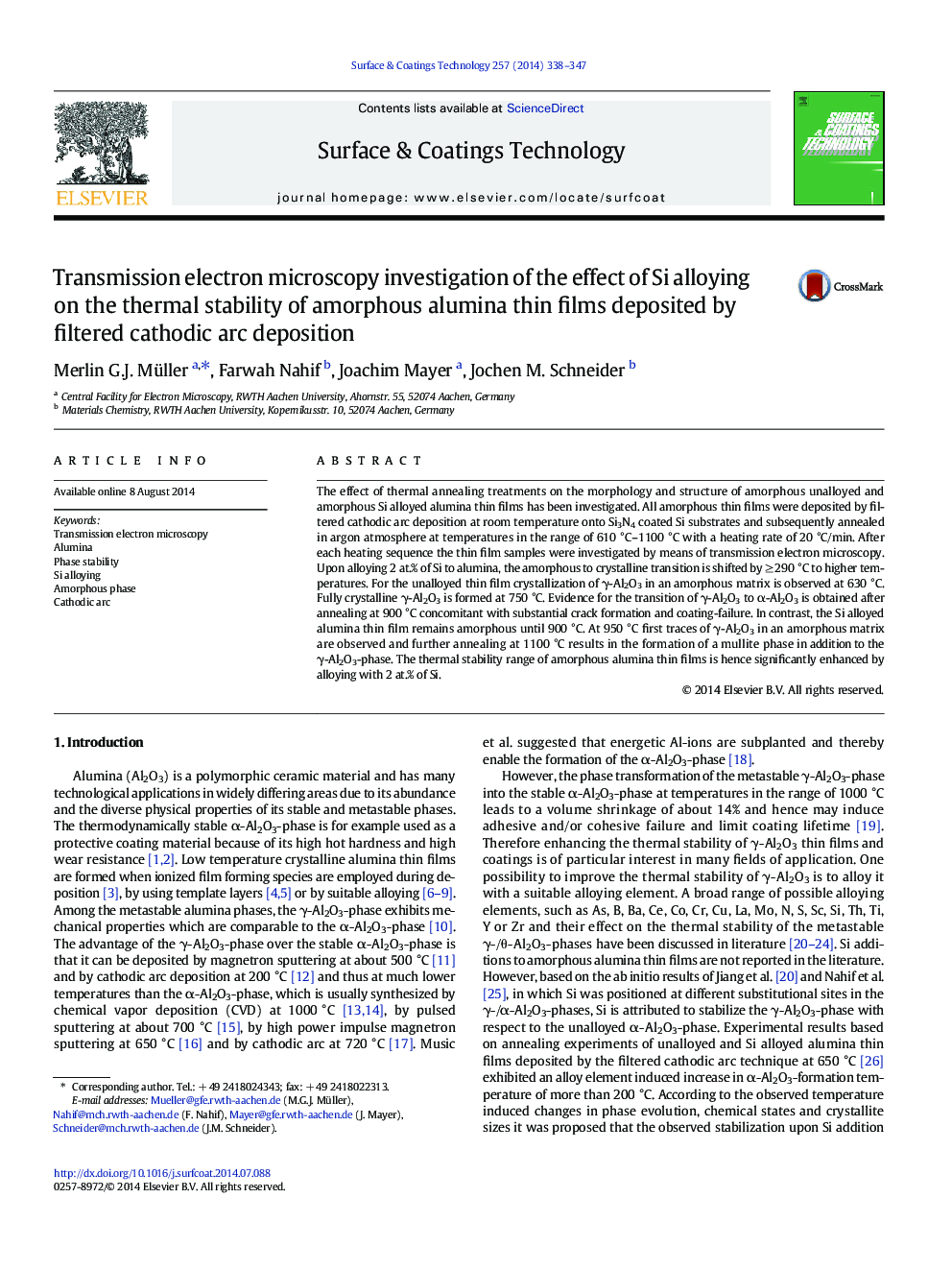| Article ID | Journal | Published Year | Pages | File Type |
|---|---|---|---|---|
| 8027468 | Surface and Coatings Technology | 2014 | 10 Pages |
Abstract
The effect of thermal annealing treatments on the morphology and structure of amorphous unalloyed and amorphous Si alloyed alumina thin films has been investigated. All amorphous thin films were deposited by filtered cathodic arc deposition at room temperature onto Si3N4 coated Si substrates and subsequently annealed in argon atmosphere at temperatures in the range of 610 °C-1100 °C with a heating rate of 20 °C/min. After each heating sequence the thin film samples were investigated by means of transmission electron microscopy. Upon alloying 2 at.% of Si to alumina, the amorphous to crystalline transition is shifted by â¥Â 290 °C to higher temperatures. For the unalloyed thin film crystallization of γ-Al2O3 in an amorphous matrix is observed at 630 °C. Fully crystalline γ-Al2O3 is formed at 750 °C. Evidence for the transition of γ-Al2O3 to α-Al2O3 is obtained after annealing at 900 °C concomitant with substantial crack formation and coating-failure. In contrast, the Si alloyed alumina thin film remains amorphous until 900 °C. At 950 °C first traces of γ-Al2O3 in an amorphous matrix are observed and further annealing at 1100 °C results in the formation of a mullite phase in addition to the γ-Al2O3-phase. The thermal stability range of amorphous alumina thin films is hence significantly enhanced by alloying with 2 at.% of Si.
Related Topics
Physical Sciences and Engineering
Materials Science
Nanotechnology
Authors
Merlin G.J. Müller, Farwah Nahif, Joachim Mayer, Jochen M. Schneider,
